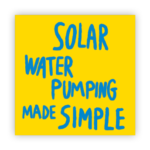WARNING - Disconnect power from the controller before performing any installation, inspection, maintenance or cleaning activities on the motor or pump.
WARNING – When the photovoltaic array is exposed to light, it supplies a DC voltage to the controller.
| Event in the App | Behavior of the LEDs in the controller | What is happening? | How do I troubleshoot the event? | What happens next? | |
|---|---|---|---|---|---|
| LED Green | LED Red | ||||
| No light | Solid |
|
|
| |
| No light | Solid |
|
|
| |
| Flashing | Flashing |
|
|
| |
| Flashing | Solid |
|
|
| |
|
|
| |||
|
|
| |||
| |||||
| |||||
| |||||
| |||||
| |||||
| No light | Solid |
|
|
| |
| Flashing | Flashing |
|
|
| |
|
| ||||
| |||||
| |||||
| |||||
|
| ||||
| Flashing | Flashing |
|
|
| |
| No light | Solid |
|
|
| |
|
|
| |||
| No light | Solid |
|
|
| |
| Flashing | Solid |
|
|
| |
| Flashing | Solid |
|
|
| |
| Flashing | Solid |
|
|
| |
|
|
| |||
|
|
| |||
| |||||
| |||||
| |||||
| |||||
| |||||
| Flashing | Flashing |
|
|
| |
Note (1): The jumper plug is not included in the S1 system. You can order it separately from your distributor using part code 19-005490.

